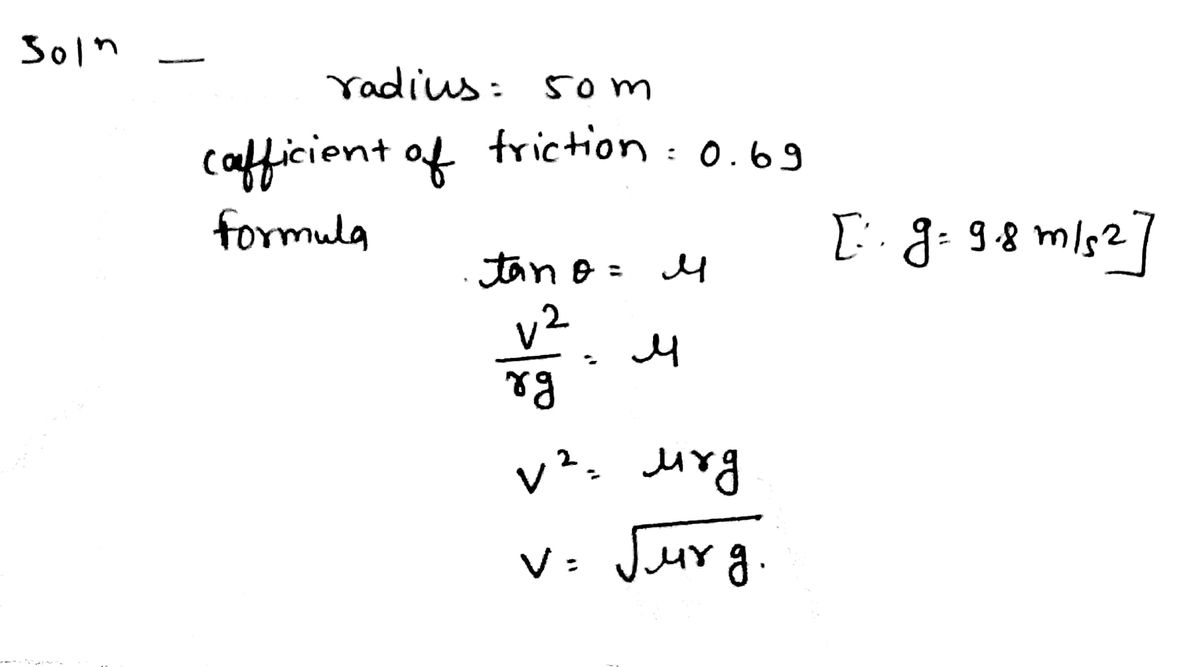A car rounds an unbanked curve of radius 50 m at a constant speed. If the coefficient of static friction between the road and car is 0.69, then what is the maximum speed the car can traverse the curve without going into a skid and sliding across the surface? 338 m/s O 35 m/s 16 m/s 18 m/s 66 m/s
A car rounds an unbanked curve of radius 50 m at a constant speed. If the coefficient of static friction between the road and car is 0.69, then what is the maximum speed the car can traverse the curve without going into a skid and sliding across the surface? 338 m/s O 35 m/s 16 m/s 18 m/s 66 m/s
College Physics
10th Edition
ISBN:9781285737027
Author:Raymond A. Serway, Chris Vuille
Publisher:Raymond A. Serway, Chris Vuille
Chapter7: Rotational Motion And The Law Of Gravity
Section: Chapter Questions
Problem 9WUE: A man whirls a 0.20-kg piece of lead attached to the end of a string of length 0.500 m in a circular...
Related questions
Question

Transcribed Image Text:A car rounds an unbanked curve of radius 50 m at a constant speed. If the coefficient
of static friction between the road and car is 0.69, then what is the maximum speed
the car can traverse the curve without going into a skid and sliding across the
surface?
338 m/s
35 m/s
16 m/s
18 m/s
66 m/s
Expert Solution
Step 1

Step by step
Solved in 2 steps with 2 images

Knowledge Booster
Learn more about
Need a deep-dive on the concept behind this application? Look no further. Learn more about this topic, physics and related others by exploring similar questions and additional content below.Recommended textbooks for you

College Physics
Physics
ISBN:
9781285737027
Author:
Raymond A. Serway, Chris Vuille
Publisher:
Cengage Learning

College Physics
Physics
ISBN:
9781285737027
Author:
Raymond A. Serway, Chris Vuille
Publisher:
Cengage Learning